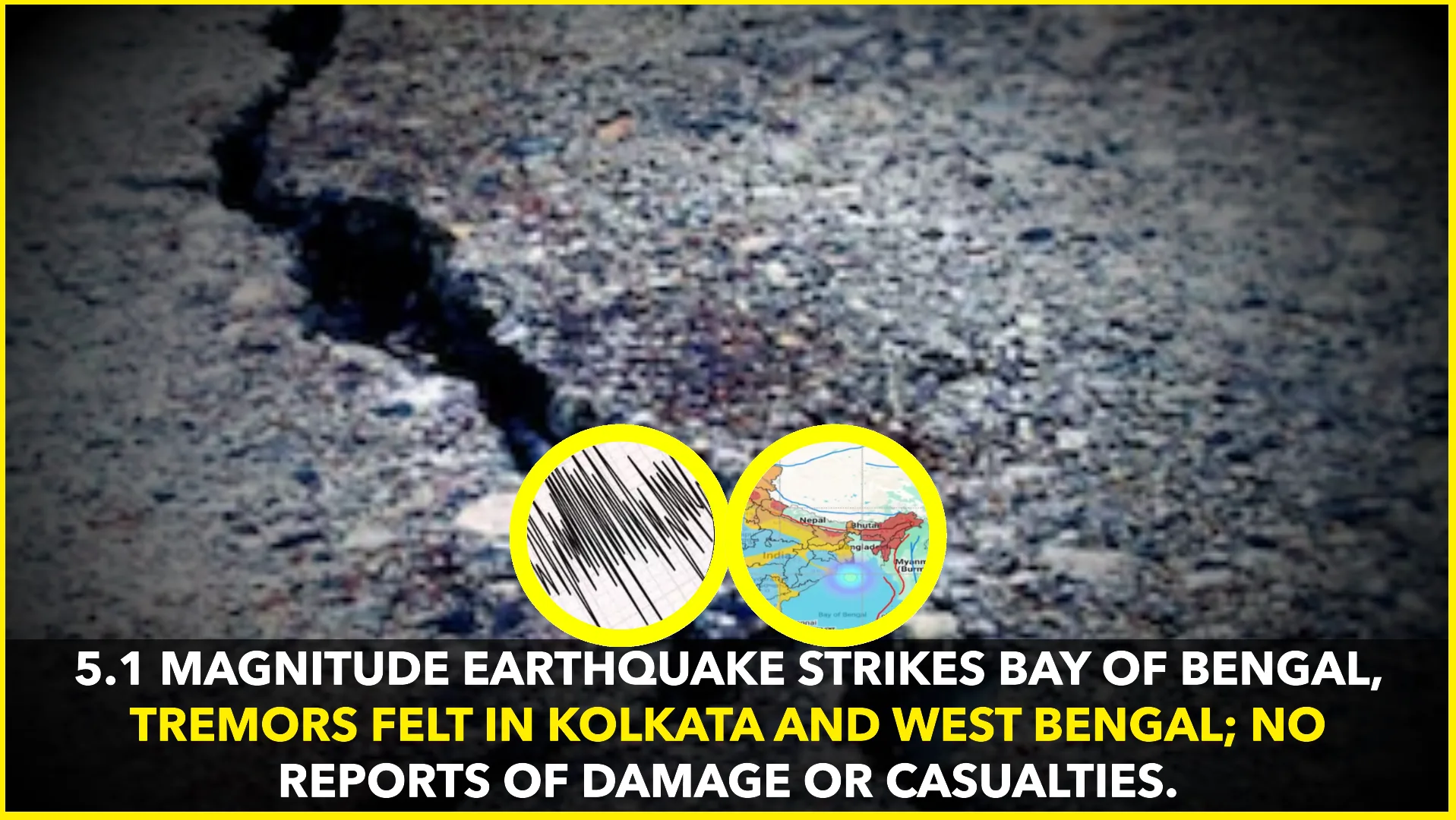In the early hours of February 25, 2025, a 5.1 magnitude earthquake struck the Bay of Bengal, sending tremors through Kolkata and various parts of West Bengal. The National Center for Seismology (NCS) reported that the quake occurred at 6:10 AM IST, with its epicenter located at latitude 19.52°N and longitude 88.55°E, at a depth of 91 kilometers.
Residents of Kolkata and surrounding areas experienced the tremors, which led to brief moments of panic. Many took to social media platforms to share their experiences, with some reporting sudden jolts that disrupted their morning routines. Despite the widespread sensation of the quake, there have been no immediate reports of damage or casualties. hindustantimes.com
Kolkata, situated in seismic zone 4, is susceptible to significant seismic activity. This classification indicates a high risk of severe earthquakes. India’s seismic zoning divides the country into four zones:
- Zone 5: 11% of the country, most active
- Zone 4: 18% of the country, including Kolkata
- Zone 3: 30% of the country
- Zone 2: Remaining areas, least active
The recent quake has reignited discussions about the city’s preparedness for seismic events, emphasizing the importance of adhering to building codes and implementing effective disaster management strategies.
This event comes just two days after a 3.7 magnitude earthquake struck the Mandi district in Himachal Pradesh on February 23, 2025. The tremor occurred at 8:42 AM, with its epicenter near Jai Devi in Mandi. The earthquake had a depth of 7 kilometers and, fortunately, did not result in any reported damage or casualties.
Himachal Pradesh, particularly the Mandi region, is known for its seismic activity due to its location in the Himalayan belt. The area falls under seismic zone 4, similar to Kolkata, indicating a high potential for significant earthquakes. The recent tremors have prompted local authorities to reassess their disaster preparedness plans and reinforce the importance of community awareness regarding earthquake safety measures.
The close succession of these seismic events serves as a stark reminder of the dynamic and unpredictable nature of the Earth’s crust in the Indian subcontinent. Experts emphasize the need for continuous monitoring and research to better understand seismic patterns and potential risks. The National Center for Seismology and other relevant agencies are actively engaged in analyzing data from these events to provide timely information and guidance to the public.
In light of these occurrences, residents in seismically active regions are advised to stay informed about earthquake safety protocols. This includes securing heavy furniture, creating family emergency plans, and participating in community drills. Awareness and preparedness are crucial in mitigating the impact of such natural disasters.
While the recent earthquakes did not result in significant damage, they underscore the importance of proactive measures in earthquake-prone areas. Authorities and communities must collaborate to enhance infrastructure resilience, enforce strict adherence to building codes, and educate the public on emergency response actions. Such initiatives are vital in safeguarding lives and property against future seismic events.
As the situation develops, the National Center for Seismology and local authorities will continue to monitor seismic activity and provide updates. Residents are encouraged to stay alert, follow official advisories, and prioritize safety in the event of aftershocks or future earthquakes.










